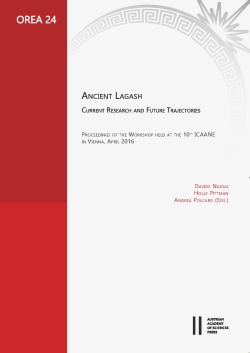
Ancient Lagash, pp. 51-66, 2022/12/27
Proceedings of the Workshop held at the 10th ICAANE in Vienna, April 2016
Transitional phases are usually characterized by multiple transformations, such as social, economic, cultural or ethnic. They are generally difficult to analyze because of the numerous events or internal influences. The transitional phase from the Uruk Culture to the Early Dynastic one, throughout the Jemdet Nast period, is one of these difficult phases. So far, the Jemdet Nasr period is still a little-known period. In southern Mesopotamia, Jemdet Nasr evidence has been recovered at the site of Uruk, Ur, Girsu and Fara. The new archaeological activities at Tell Zurghul, with the discovery of a transitional Late Uruk/Jemdet Nasr phase and a Jemdet Nasr phase in Area A, have provided new data regarding the passage from the 4th to the 3rd millennium BC in southern Mesopotamia and, more precisely, in the Lagash region.
Keywords: Southern Mesopotamia, Tell Zurghul, Nigin, Uruk, Jemdet Nasr, Lagash region